Hello everyone, I’m back with another edition of The Mirror Gallery featuring the Vintage Artist Constructed format, or #mtgVAC. For those of you that missed my last article, here are some quick details on how the format began and has evolved.
The Background: Condensed, Just Add Art
The format was created by Joshua Krause of Original Magic Art and Vorthos Mike Linnemann. Both of these gentlemen are very active in the original Magic art community, and what was born from their collaboration was a 60 card, Vintage-legal format where every card must be illustrated by the same artist, including basic lands.
Yes. Including basic lands. A few months ago I was at Grand Prix Washington, DC with Brian Scott Walters, another very active player in the format, playing some games of VAC. He said he heard the format described best as:
“Vintage Artist Constructed is the only format you can play in Magic that can be radically changed with the printing of a basic land.”
As each new Magic set comes out new cards are created, old cards are printed with new art, and new artists get basic land cycles, changing the landscape (you know I’m good for one bad joke an article, stick with me) of the format. VAC is some of the most fun that I have had playing Magic in my fifteen years with the game.
In my last article I highlighted that it only takes three questions to build a deck. They are:
Step 1: Do you have a favorite artist?
Step 2: Do they have basic lands?
Step 3: Do they have playable cards in those colors?
You may not find a deck that fits you, or is even plausible, on your first search. Maybe your favorite artist is Titus Lunter: an artist with access to all colors, some great non-basics, now great artifacts post-Dominaria, and even some serious Masterpiece Invocations. He just doesn’t have that many creatures—four to be exact, plus one MTGO-only in Traxos, Scourge of Kroog. The deck is close to playable, but probably not there yet. There is a pretty slick control deck on the horizon for him though. So make a note, check the new sets, and prepare your brewing budget.
Or maybe your favorite artist is Zack Stella. A definitely buildable card pool, but so far he hasn’t illustrated any basic lands. If he gets a set of basic lands, especially an island, and please a Mountain to satisfy my Izzet-loving heart, his deck comes online and the format changes once again. These are just two of the artists that are five or fewer cards away from rising to Tier 1 status, and only time will tell what happens with their respective decks.
“So Donny, what decks do you play?”
Last time we looked at the very first deck I built for the format, Mono-Red Matt Cavotta. The deck plays very much like a Big Red archetype. It’s not incredibly fast, but it hits hard once established.
After I built my first deck based roughly on one of the better decks in the format, I wanted to go rogue and brew a little like I did in my early days of Magic. I started searching up artists and seeing who had basic and non-basic lands, and then how those colors fell into place. One of the biggest hurdles you’ll find in Vintage Artist Constructed is an artist with fabulous lands and a very strong card pool, yet the colors and synergies just don’t match up. I eventually found that Randy Gallegos had done several islands way back in Tempest and had a pool of blue cards. Could there be something here? Maybe. I went to work.
The Deck
Mono-Blue Randy Gallegos
| Creatures (18) 4 Grimoire Thief 4 Wall of Shields 4 Kaijin of the Vanishing Touch 3 Sage of Epityr 3 Cloudhoof Kirin Spells (20) 4 Aura of Dominion 4 Accumulated Knowledge 3 Trip Noose 3 Leonin Bladetrap 3 Regress 2 Curfew 1 Call the Skybreaker | Lands (22) 22 Island Sideboard (15) 4 Sprite Noble 4 Cloud Spirit 2 Call the Skybreaker 3 Stern Proctor 1 Trip Noose 1 Leonin Bladetrap |
This deck, at least as it’s built, will never be the most competitive in the format. It can lose easily to spot removal and has trouble racing with the super-fast aggro decks like Wayne Reynolds Goblins. It is however a lot of fun, and costs less than a dinner for two at Outback Steakhouse. If you’re patient, then the look on your opponent’s face will be worth the less than stellar win percentage for those few sweet victories.
The Lands
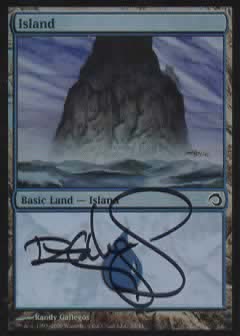
Randy Gallegos did four basic Islands for Tempest way back in 1997, and once I had the deck built I hit my circuit of LGS to see how many I could find. One here, and one there, until I got to a store where I often pick up foil basic lands for Commander and VAC. They had Randy Gallegos’ Island but in foil;—it turns out it was reprinted in the Premium Deck Series: Slivers. And it looked fantastic. They had as many as I could want and for $.50 each I bought a few more than I knew I would need.
I met Randy in person at Illuxcon last year in 2017 and had him sign all of the Islands for this deck. Normally if I have the opportunity to meet a VAC artist I have them sign the whole deck, but at that point the deck was still in the early stages of getting it right, so I held off until the next time I see him.
The Meat & Potatoes
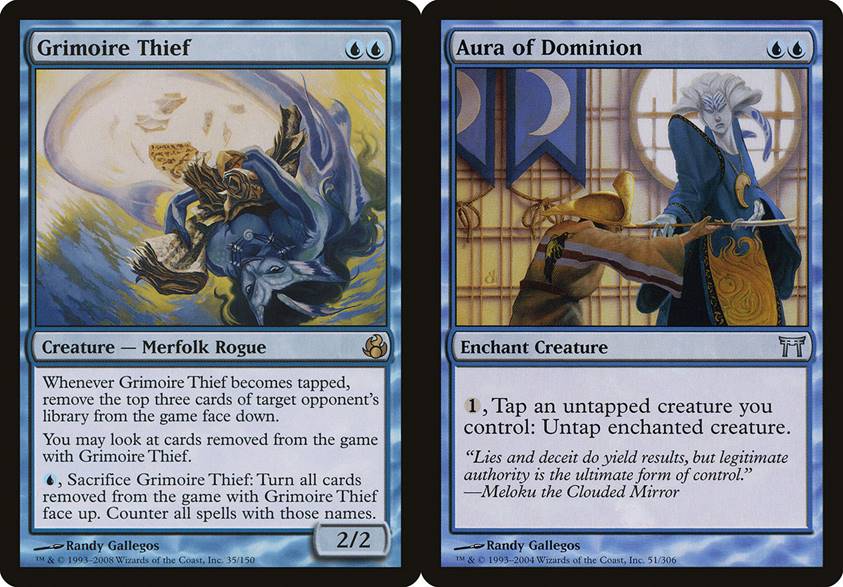
The Combo. This combo, apparently already a thing unbeknownst to me according to the cards’ respective Gatherer pages, was what excited me when I started putting this list together. I’m an Izzet player at heart as some of you know by now, so to find a fun head-scratching shenanigan like this one is one of my favorite parts of Magic. Play Grimoire Thief, and enchant it with Aura of Dominion. What you now have: for one mana, your opponent mills three, for as many lands as you have. You can target the Grimoire Thief with both clauses of Aura of Dominion, and you’ve got yourself a nice little mill engine.
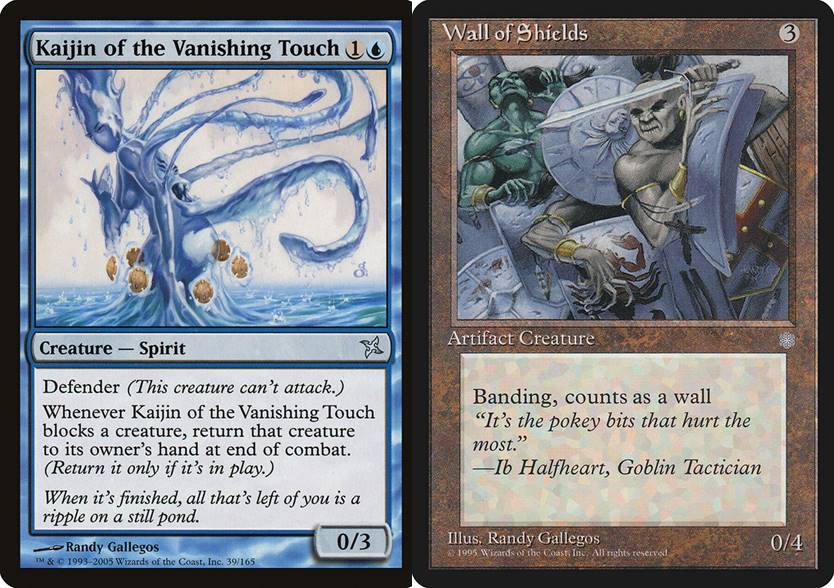
Put Up a Wall. It’s important to stay alive until you can assemble your two combo pieces. Enter Kaijin of the Vanishing Touch and Wall of Shields. Their job is to hold up the ground for as long as possible, and they do a fair job at it. Just as a heads up: no one will know what Kaijin of the Vanishing Touch does, so when you play it kindly rotate it for your opponent to read. They’ll thank you, and then probably say something funny under their breath. The card is stronger than you think and usually draws a removal spell meant for something else.
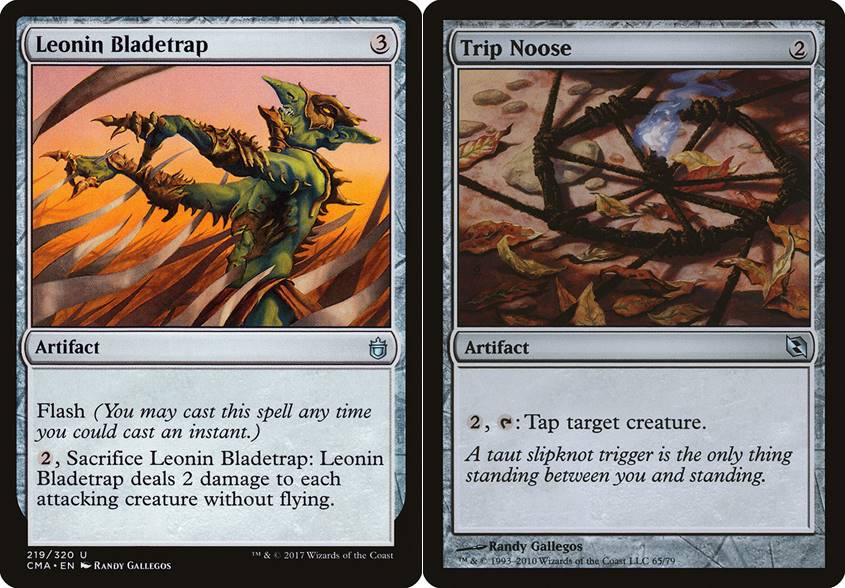
Stay Alive. Again, these cards are to try and keep you alive as long as possible. With artifact removal not being a thing for a large amount of decks, there is a fair chance these stick around for a little while once played. Leonin Bladetrap can be savage against aggressive decks full of small creatures, and Trip Noose can hold off what you can’t deal with otherwise.
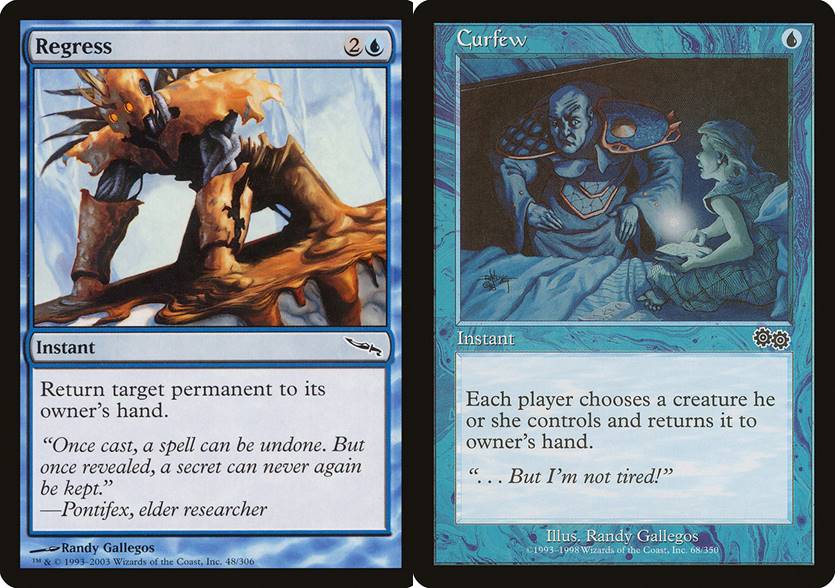
Keep Not Dying. Along those same lines are Regress and Curfew. They can get your Grimoire Thief out of danger while you wait for (or already have) another Aura of Dominion. They bring your Kaijin back if he’s targeted before you’re ready to combo. Or they just delay your opponent’s threat for a turn longer.
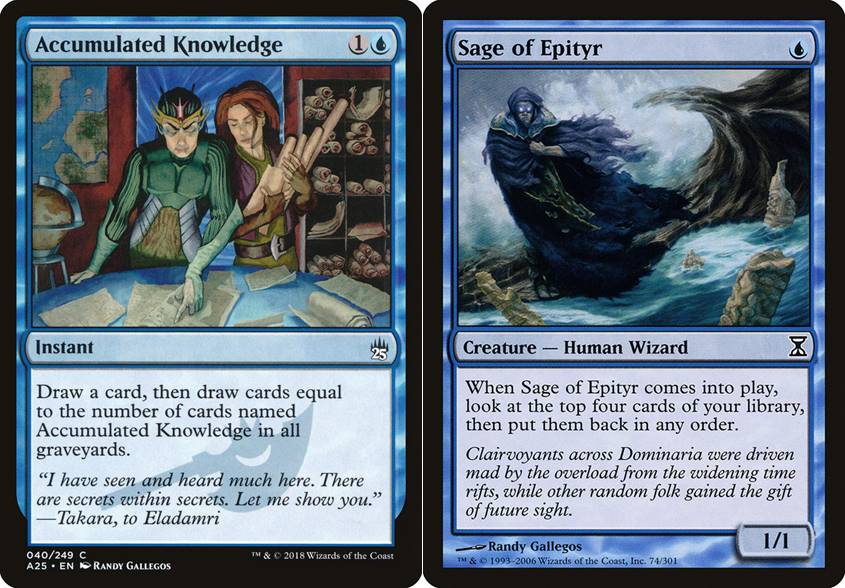
Find What You Need. These two cards help you find what you need, when you need it. Sage of Epityr can be instrumental in making sure your draws go as you would like them. Accumulated Knowledge gets better as the game goes on, and is just a solid blue card draw spell.
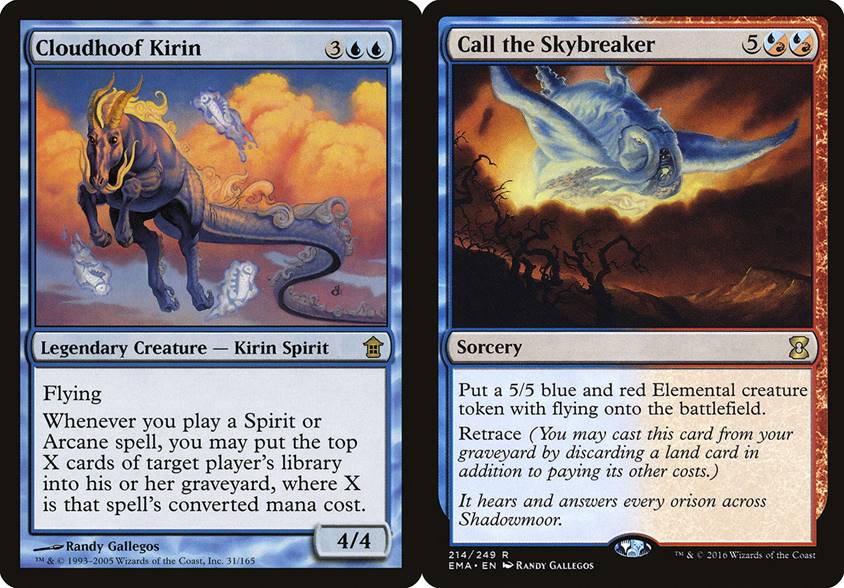
Backup Plan. If your mill gameplan doesn’t go well, and I promise that sometimes it won’t, you need a way to try and finish the game. Cloudhoof Kirin would be exceptional in this deck if it were not legendary. A solid flyer, it also makes good use of a later game Kaijin should you see one, as well as post-board heavy Spirit builds. Call the Skybreaker is a great way to break a stalemate, and puts to good use the extra lands in your hand in the late game if you’ve abandoned the need for extra mill mana.
Sideboard
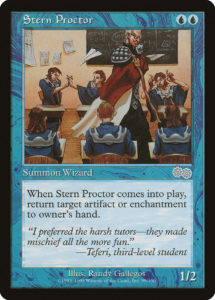
Remember what I said about their being a significant lack of artifact removal in the format? This is as close as you can get, so it’ll have to do
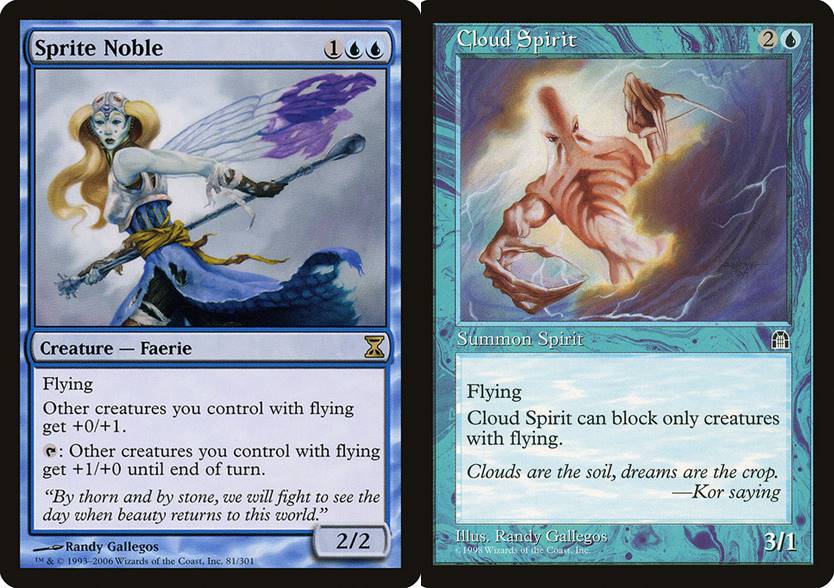
Just as Mono-Red Cavotta has an option to go Goblin Tribal, this deck can abandon the Grimoire Thief/Aura of Dominion plan in exchange for a straightforward Mono-Blue Skies deck. Flying creatures, or answers to them, are something else that many decks in the format lack. It becomes a race, but it’s one that is winnable. Take to the air and go attacking.
Cards to Consider
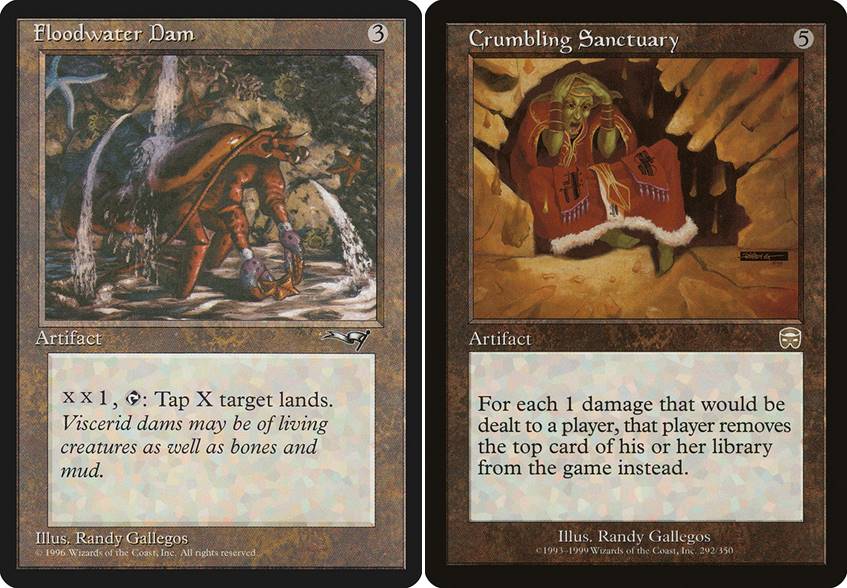
These two cards get interesting. Crumbling Sanctuary helps you get cards out of an opponent’s library; but you’re not really dealing a lot of damage to them, especially not on your mill/combo gameplan. It also helps keep you alive using your library as a life total, but then you risk losing pieces you need to try and win.
Floodwater Dam is the same way. Maybe you can hold off their threat by tapping their lands during their upkeep, but then you can effectively do nothing because of the cost to do so. I’m not sure these make the deck any better, but maybe its worth a few test games to see.
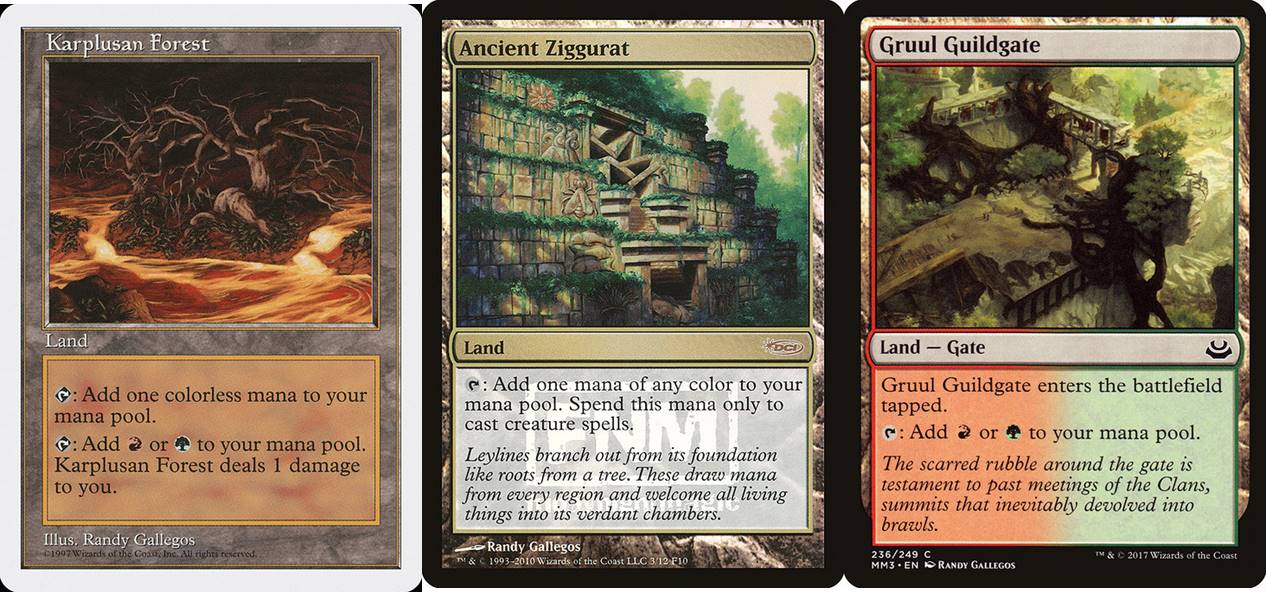
There is a Temur option for the Randy Gallegos deck. I know of at least one other person from the VAC Facebook Group that has tried it, but I am not sure of the success. It is borderline greedy in terms of finding the right colors, but could it be worth it? Ancient Ziggurat is the FNM promo so it’s a little pricey—but it’s beautiful, especially in foil.
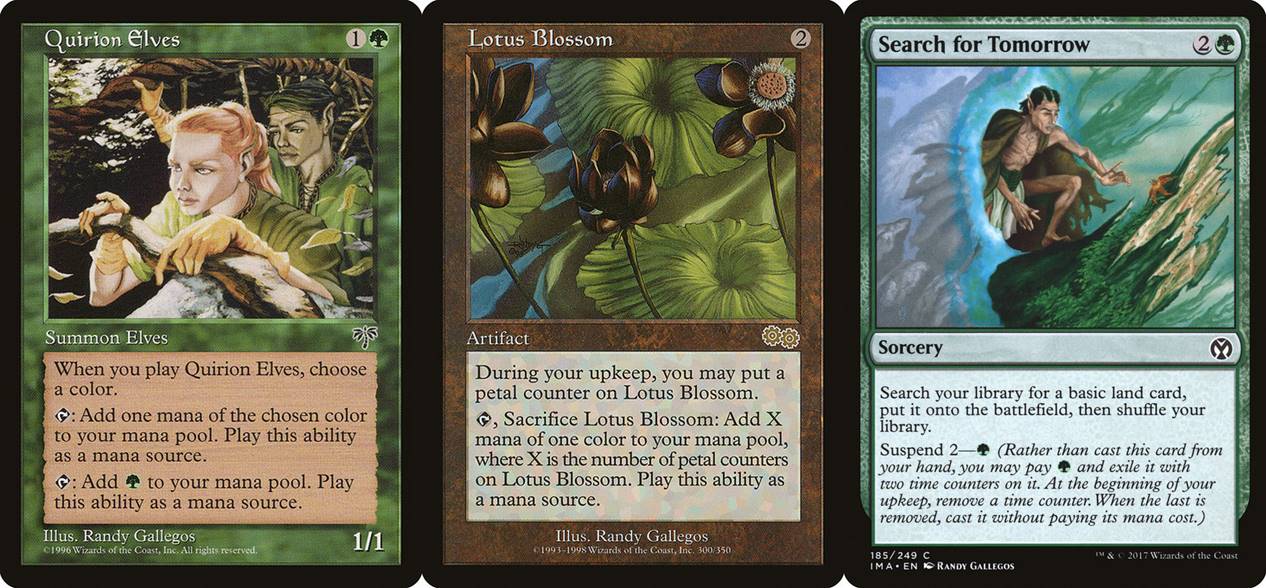
These all help smooth out the mana base. But what’s the payoff?
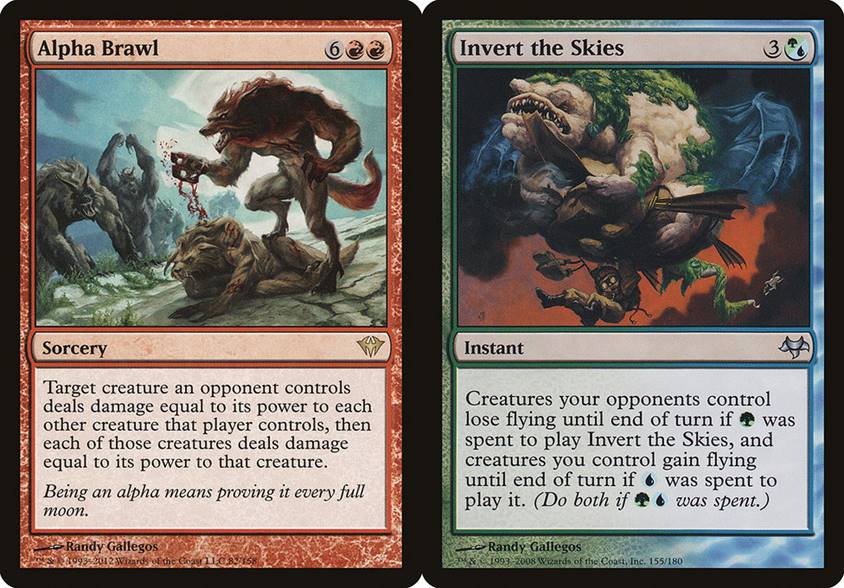
Yes. Get to eight and Alpha Brawl blows up their board. And remember what I said about flying? Invert the Skies. Hard to deal with. Gives everything flying and makes sure their stuff doesn’t have it? Seems pretty good.
About the Artist: Randy Gallegos

Randy Gallegos has, at the time of this article, done 158 illustrations for Magic, beginning in 1995 and most recently as Rivals of Ixalan. That’s 23 years, folks, and that’s a long time no matter how you look at it.
Randy does not just illustrate for Magic, but can be seen in galleries and exhibitions across the country, often simultaneously. His body of work spans the gamut from illustration to imaginative realism to still life to landscape and every combination in between. The man paints everything, and does it really, really well.
Take some time to browse his work on his website and check out some of his currently available non-Magic pieces over on Every Day Original. Randy is widely talented and Magic is fortunate to have had him for so long. I know I am not alone when I say the game is looking forward to seeing what else may be coming from him in the future.
VAC Original Art
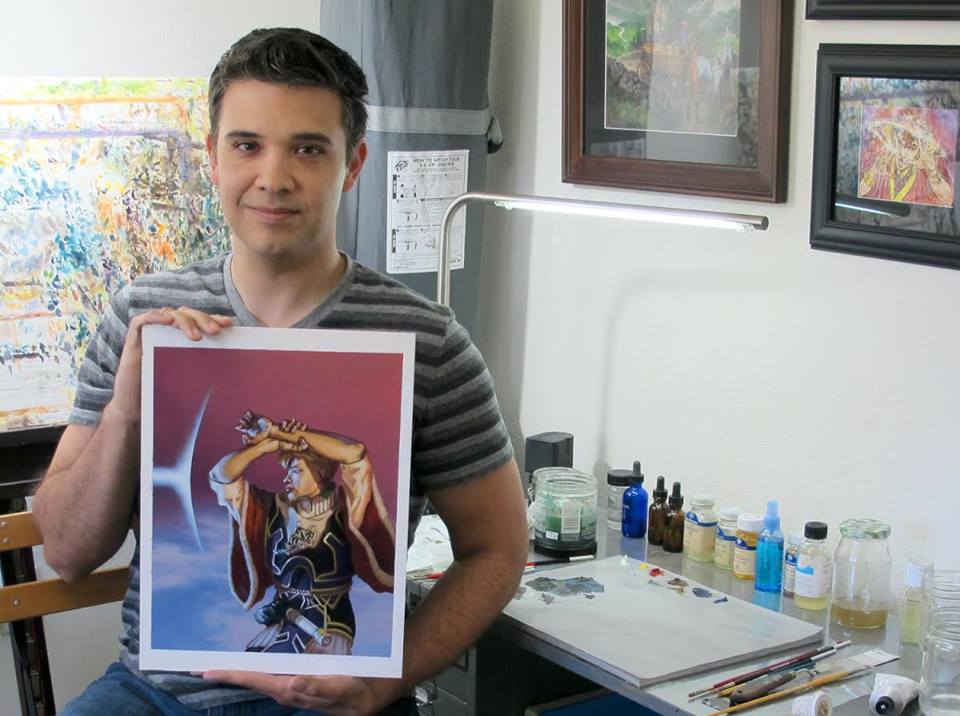
Randy Gallegos just recently opened his Magic “vault” of original works he still owns, auctioning the original art for the Ertai Vanguard card he illustrated back in 1997 on the occasion of Magic’s anniversary and return to Dominaria. I believe he has a few Magic pieces in the pipeline, but it may be a bit before we see them. For now anyone looking for a Gallegos Magic original will have to sit tight. He’s done a considerable amount of work for Magic as I mentioned, so his work does show up on the secondary market on occasion as well. Remember Rule #1b: be patient.
Randy has also partnered with Original Magic Art to make a playmat of his Inspiring Cleric from Ixalan. I saw this painting in person at Illuxcon and it is absolutely incredible—I can only imagine it looks just as great on a playmat. He also has a full line of beautifully illustrated tokens.
Wrapping Up
As always I hope you enjoyed this dive back into Vintage Artist Constructed, and that it inspires you to go back to the brewing table in your own Magic playing. After writing this and explaining the Cards to Consider section, I think I will be revisiting this deck and attempting the Temur version. Sometimes you just have to take the time to sit down and work through a card pool in VAC. I think the three-color version might be another viable option here, and probably better than my current build. Stay tuned for that in the future.
Next time we will return to my collection of color studies by Ryan Pancoast, and look at one that’s not quite the same as all the rest. We will also explore one of his personal, non-Magic projects that I think you all will really find interesting! Additionally, stay tuned to @HipstersMTG for the new Art Market Minute series that just started this week.
Remember, to see original #mtgart and other #vorthos related things, including #mtgVAC decks, follow me on Twitter. Feel free to ask questions or retweet to continue the conversation. Thanks and see you next time!
Donny Caltrider has been playing Magic since 2002 and collecting original Magic art since 2017. He has an M.A. in Museum Studies from Johns Hopkins University and enjoys telling stories about art, objects, and the intersection of fantasy with real-life. You can find him on Twitter talking about #mtgart, museums, and other #vorthos related goodness. Follow along and continue the conversation!

